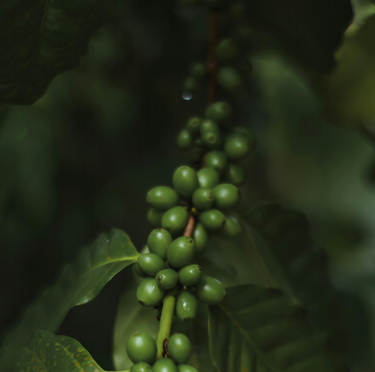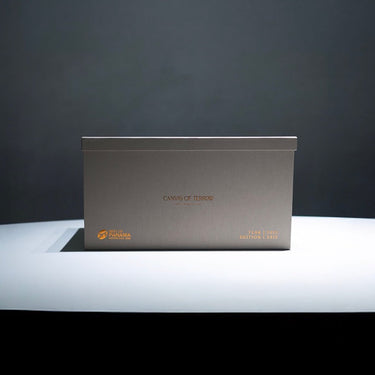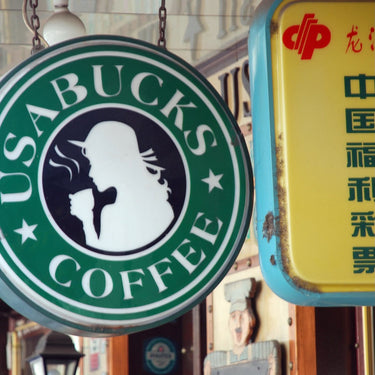If you’re reading a blog post from a coffee roaster I can bet you’re a pretty big coffee nerd (like us) but have you ever drunk coffee from China? Yeah a lot of us hadn’t either. One of the biggest countries on the planet, with areas perfect for coffee growth and some amazing coffees produced, so why do you rarely see it on shelves here in the West?
How it Grew 🌱
Well considering its size, China is pretty new to the coffee world. China has been making tea for over 3,000 years but coffee has only really been a focus there for around 30 years. That change happened when good old capitalism started to roll into the Chinese market in the 1980s. In 1988, the government led a program partnered with the United Nations Development Program and the World Bank that allowed coffee to be produced at a large scale. Combined with Nestle moving into the Chinese marketplace, what was once a very niche product in the region began to grow, literally. Right now, over 95% of the coffee in mainland China is produced in just one province; Yunnan, with an annual output of more than 100,000 tons of coffee. This is because it ticks the boxes of great coffee areas; high-altitude terrain, rich volcanic soils, and subtropical climate.
Coffee Drinkers vs Coffee Shops Frequenters
Currently, average coffee consumption per capita in mainland China is only 11 cups per year, while in the United States it is over 550 cups per year, and here in the UK it is almost 200 cups per year. So it is safe to say that it isn’t a big hitter. But why is that? Well tea is the Chinese national beverage and with it being far cheaper than a regular cup of coffee let alone a speciality one it is hard to compete. BUT hold up before you write off China’s coffee consumption, while they might not drink as much per person they have a lot of people in China (to put it lightly) and the appetite for branded coffee shops is clearly huge as they overtook the US late in 2023 as the world’s largest branded coffee shop market. It has a pretty mindblowing 7,000+ Starbucks (Starbuckes, Starbucki, what's the plural of Starbucks?!). Starbucks was also one of the first to invest in the growing of coffee in China and promised to train 50,000 coffee farmers.
But is the coffee any good? 🤷♂️
You would think that the investment from massive corporations would be a big turn off for us here at Rave but it is actually the locals' growing demand for specialty, high-grade and third-wave coffees that has driven higher quality coffee in the region. So rather than the corporations it is the local coffee shops that is why the coffee is now so great.
We have two coffees currently available from China; Dongka and Banka. Picked not because they come from China but because they are cracking coffees in their own right.
Banka is the name given to both the farm and the wet mill that processes the coffee cherries. It is managed by ‘Yunnan Coffee Traders’ who have driven the improvements to specialty coffee in the region. In the case of this particular lot, coffee cherries are hand-harvested before being passed through an optical sorter to remove over and under ripe fruit. The perfect cherries are then tank fermented for 48 hours, and dried on patios to optimal moisture levels before dry milling and finally packaging for export producing a natural process coffee that works really well in pour-over methods with tasting notes of redcurrant, black tea and praline.
Our Dongka coffee (coming on general release on February 1st 🤐) gets it's name from the family run farm in Menglian country, China. This particular lot of washed coffee is processed by Mr Li on the farm's own washing station. The medium roast style accentuates the citric acidity with a balance of brown sugar sweetness & roasted almond notes.
Ok it is good coffee so why don’t we see more of it?
The demand for coffee within the country is why we don’t see it more often. Coffee is now trendy in China and even though there aren’t as many cups per capita consumed it has shifted the game in China. It is hard for roasters outside of the country to compete with the premium prices that Chinese roasters are willing to pay.
Most of China's coffee now comes from a newer coffee plant hybrid varietal known as Catimor which is more resistant to the dreaded coffee rust disease that has plagued the crops in previous years and hindered yields. That lower yield and higher demand drive the cost higher too (Business Studies A-Level coming in clutch for that knowledge). Combine that with the difficulties with export and it is just a tough coffee supplier to get hold of. But this new variety of coffee means you might see more and more Chinese coffee popping up in years to come as yields increase.
Not to brag but we managed to get two varieties…
The Final Sip ☕️
Even though China has only been in the coffee game properly for the past 30+ years it is already starting to make waves in the specialty coffee market and this is unlikely to slow down anytime soon. With increasing demand for specialty coffee in the country itself, more investment pouring in from around the world and interest from roasters like us, coffee is the bull in the China shop knocking over previously established coffee countries for space on your wish list.







